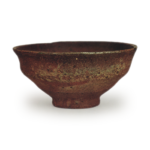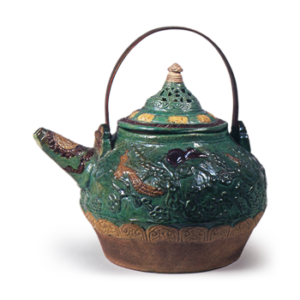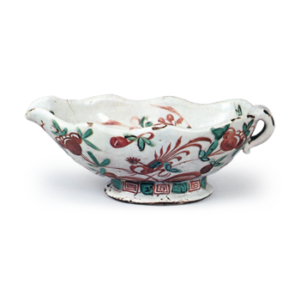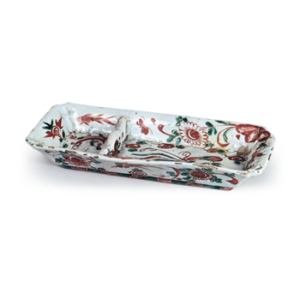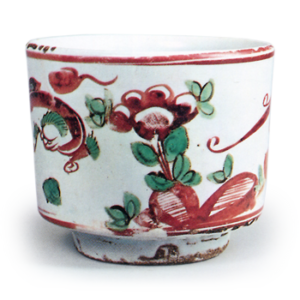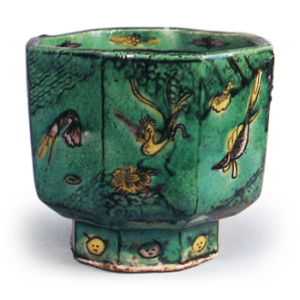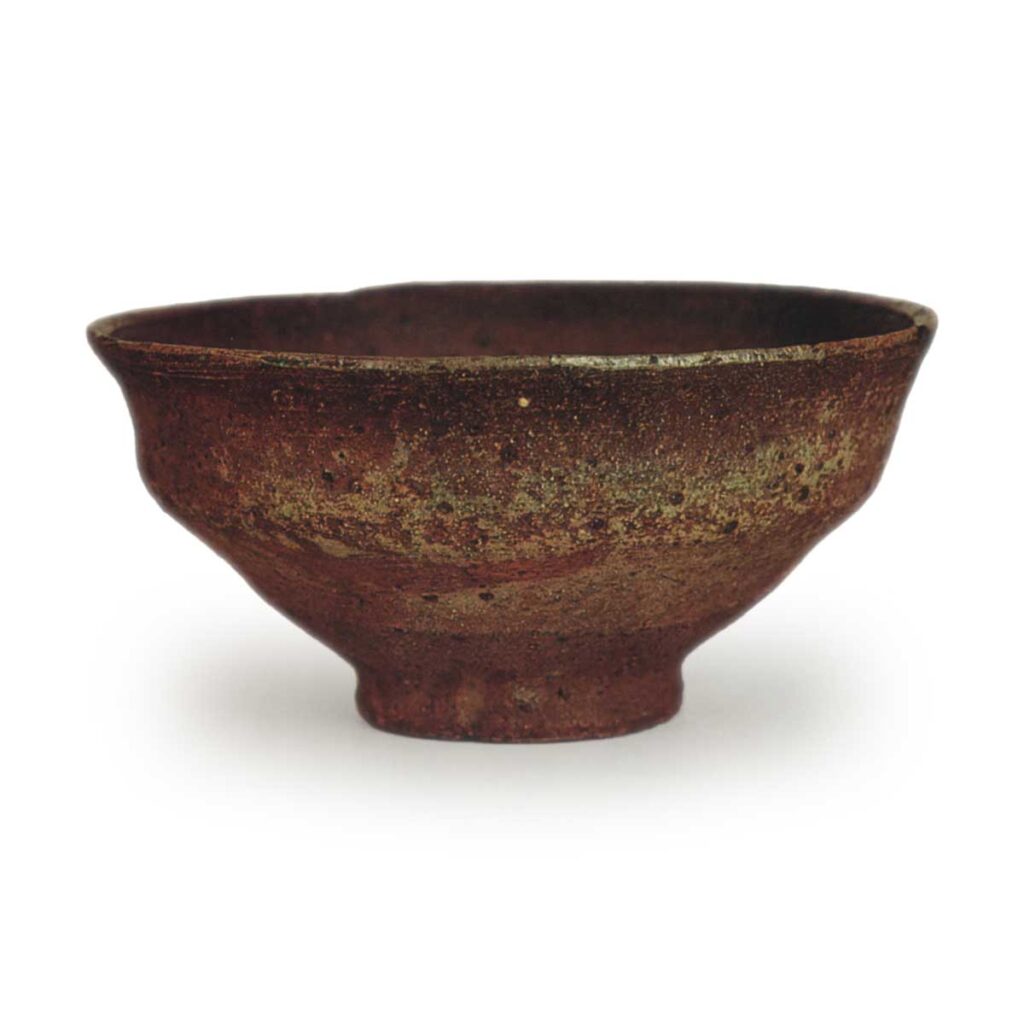
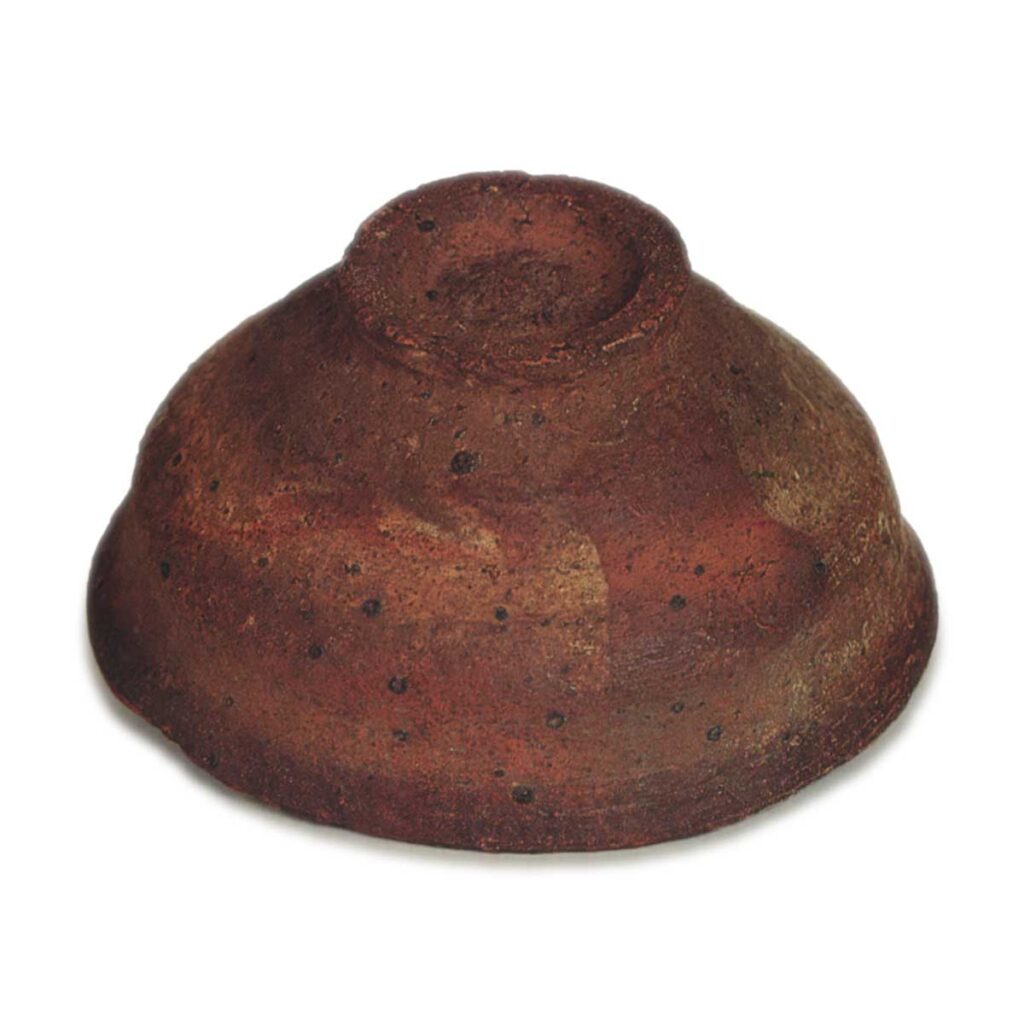
Important Cultural Property
Collection: Hatakeyama Memorial Museum of Fine Art
Height: 6.6-7.0cm
Mouth diameter: 1.35-14.1cm
Outer diameter of the base: 5.5 – 5.6 cm
Height of the same: 0.8cm
This Kaki-no-Tsai (persimmon cai) tea bowl, originally from Bishamondo in Yamashina, Kyoto, is known as one of the best Kaki-no-Tsai bowls because of its particularly fine appearance and deep connotation in its withered skin. Bishamondō Hall in Yamashina is home to some of the finest examples, such as Koetsu’s Akaraku tea bowl, Bishamondō, and Kinuta celadon porcelain phoenix-mimi hana ike, Ming Man’ei. It is said that the outstanding monk Tenkai, who lived here in the early Edo period and had great authority, may have collected such masterpieces.
There are many famous bowls in the Kakinobori area, including Kyogoku, Otsu, Tatsuta, Hakusame, and Wani, but the Bishamondo in particular deeply attracts my attention because of its shape. The mouth is tight, the waist is full of intonation, and the base of the bowl is full of flavor. The burnt, sweet and rough skin reminds us of an old monk, and the iron grains in the base are melting and adding to the scenery. Some people have said that there is nothing better than this Kakinomaku Bishamondo than a female well or a rain leak to enjoy a cup of tea quietly by oneself.
The base is a sandy clay with a slight iron content, to which a thin coat of transparent powder is applied. The iron parts are burnt and blackened, and the silica sand grains are shining. Because the firing was not yet complete, the glaze has melted on one half of the surface, but the other half is raw and rough. However, the rough skin is not a single feature, and the subtle changes in the slightly reddish and yellowish areas are the highlight of this tea bowl.
There is also a large square unglazed area from the body to the waist, which turns reddish brown when wet, adding even more charm to this tea bowl. There are four marks on the inner surface of the bowl, but because it is not burned well, only these areas turn into a loquat color, making it a deeply atmospheric tea bowl with changes both inside and outside. There is a small fraying at the edge of the mouth, and this has been repaired with black lacquer.
The inner box is made of paulownia wood and inscribed by Roka Hirase, with “Kaki-obi Chakeng Bishamondou” on the front and “Yamashina Gomonzeki Gokurazou Gokurazou Ya” on the back, and the outer box is made of paulownia wood and inscribed by Rogin Toda, with “Kaki-obi Korai Chawan” on the front and “Kon Chakeng Bishamondou Ya, in the possession of Miya-sama, Meiji 2-nen Haru Gosho, Umehide Hitsuzo Kyu Kiki Nanki Gyomu no Urabako Hirase Roka Kimizome Shu, Ichigenan Shu. The inscription reads “Rogin.
It was originally owned by Hirase Roka in Osaka, and later became the property of Murahiko in Kanazawa, but by the time “Taisho Meikikan” was compiled, it was in Murahiko in Kanazawa, so it was refused for publication, and although it is the most famous bowl in Kakinomaku, it is not recorded in the book.
(Fujio Koyama)

